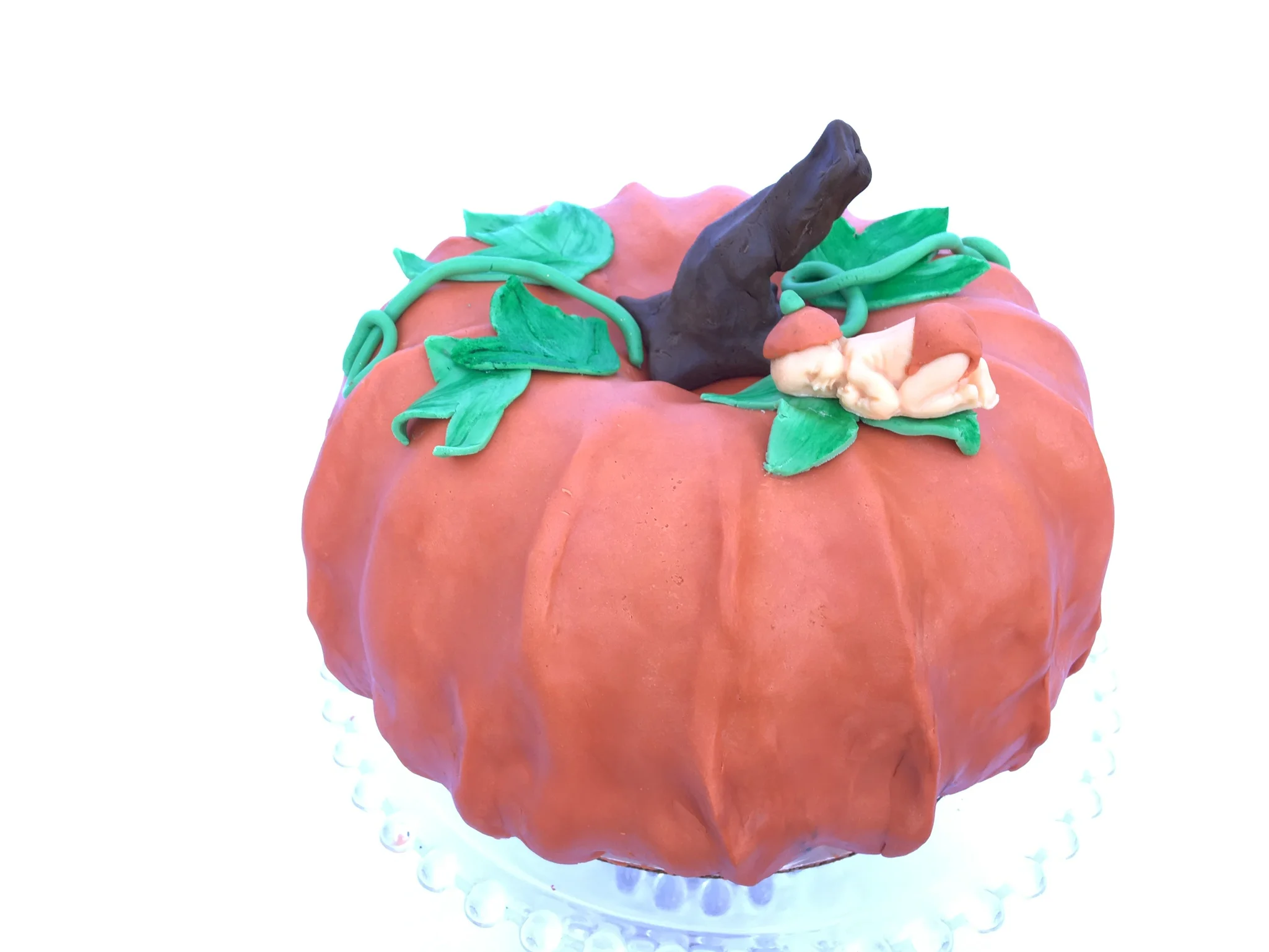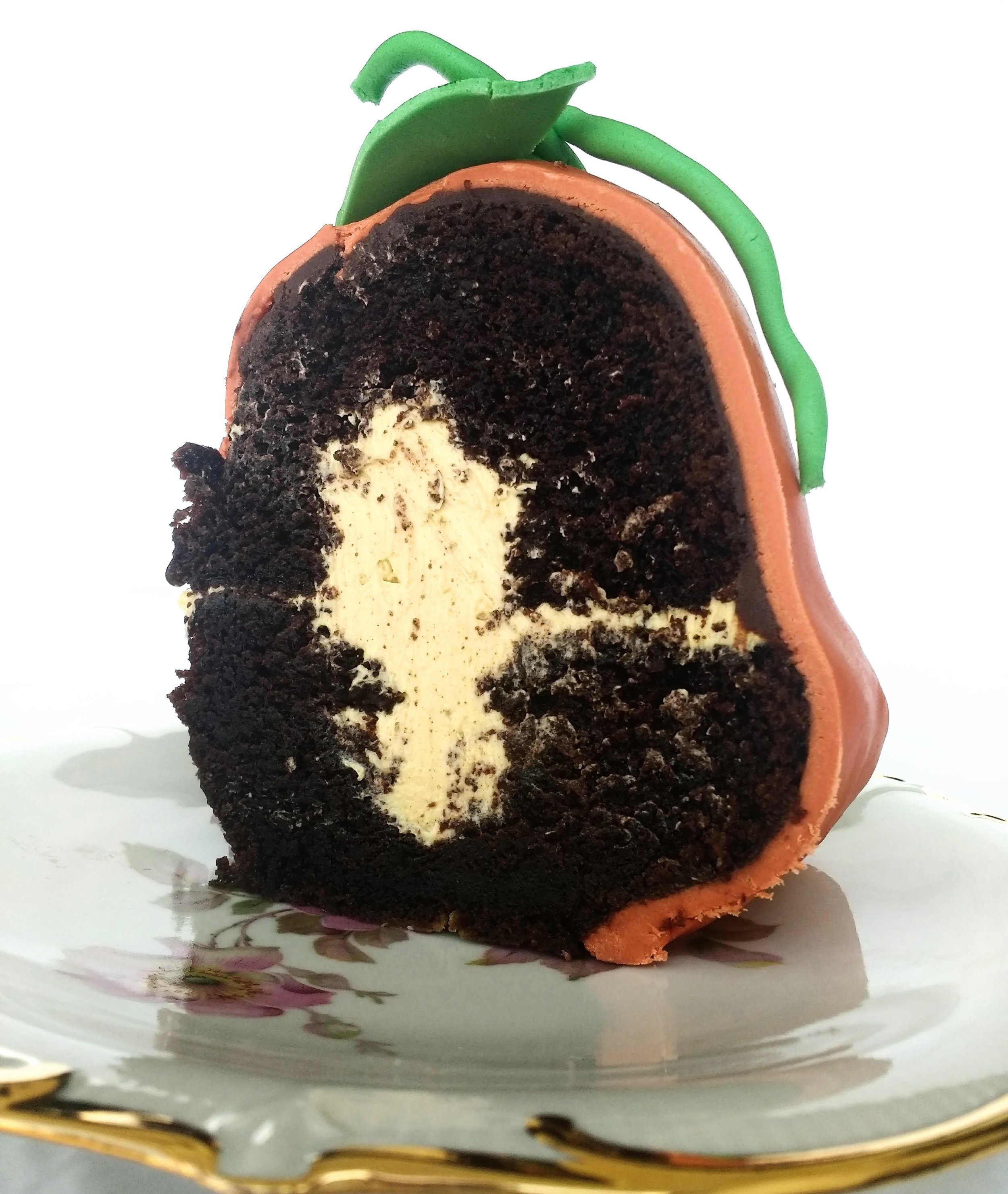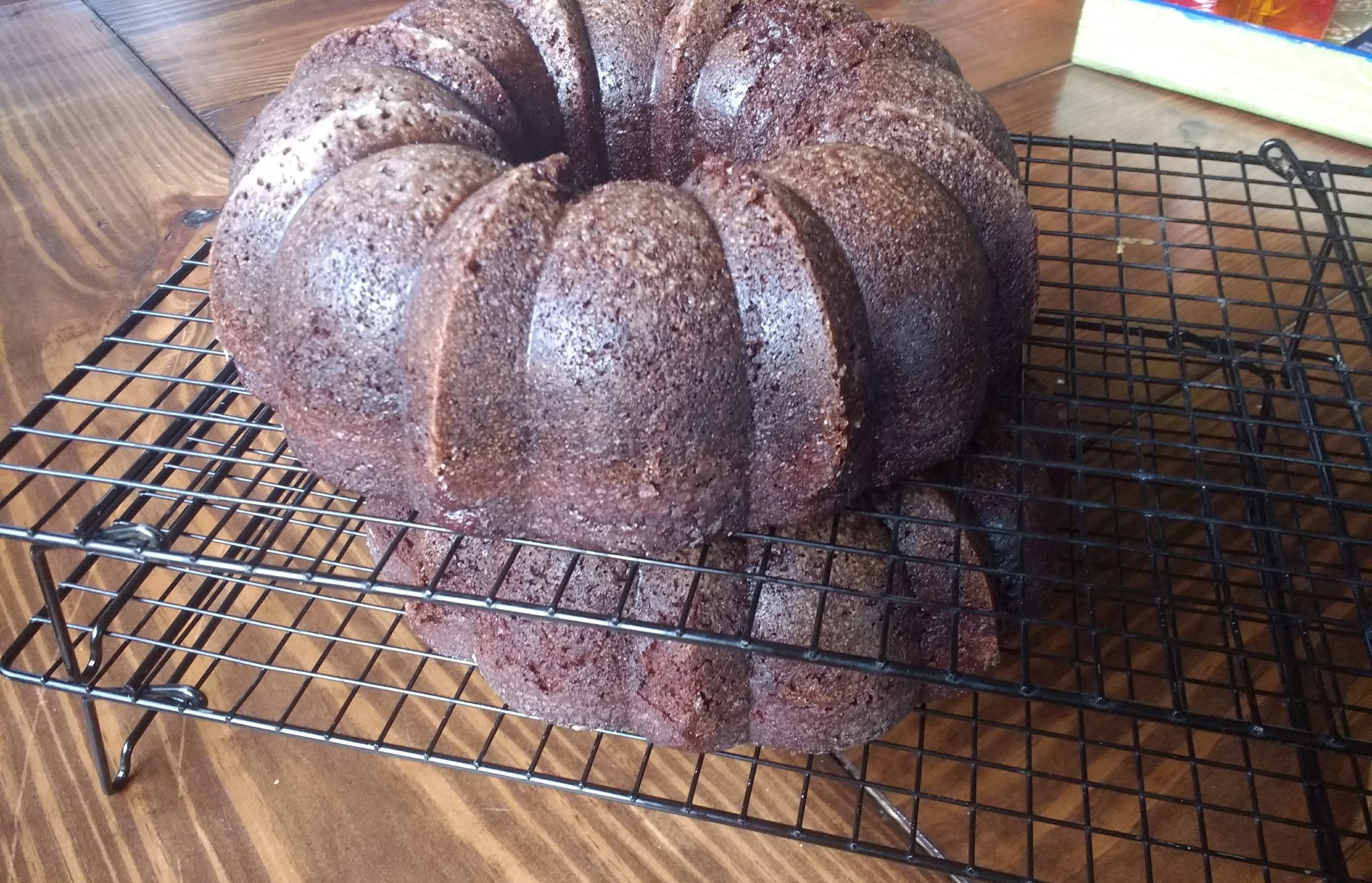How to Make a Pumpkin-shaped Cake
This content uses referral links. The opinions expressed in this post are completely our own.
This weekend I co-hosted a "Sweet Lil' Pumpkin" baby shower with a friend for another friend who is expecting her first. In terms of party-planning, the prescription was: Pumpkin, everything pumpkin! Pinterest is loaded with inspiration ideas for a pumpkin-themed baby shower, and the expectant mother loves pumpkin, so this was an idea I could easily get behind.
We were already planning on serving pumpkin muffins at the party, and another guest planned to bring pumpkin bread, and there was going to be pumpkin-spice tea, so while I initially toyed with the idea of baking a pumpkin-flavored cake for the shower, I eventually passed over it in favor of a pumpkin-shaped cake. (Actually, I texted Maria and Sophie with a poll between two flavors: chocolate cake with salted caramel buttercream filling and a dark chocolate ganache, or pumpkin cake with a salted caramel buttercream filling and white chocolate ganache. Maria responded immediately--within four minutes--voting for the chocolate cake. Sophie responded thirty minutes later in favor of the pumpkin, but by that point I had moved far beyond cake flavors and I was deep into cake design. Chocolate it was.)
Of course I turned to Pinterest and YouTube videos looking for inspiration and insight into how I was going to execute this pumpkin-shaped cake. One of the coolest tricks I found on the web was the method of placing two bundt cakes together to create a pumpkin-shaped foundation.
My next question was how I was going to incorporate a filling. I knew I wanted a ganache glaze on the outside, so I wouldn't use the salted caramel buttercream to frost the exterior. I wasn't sure if simply spreading the salted-caramel buttercream filling between the two layers would be enough filling in proportion to the amount of cake. That was when I remembered that Maria had made a Twinkie Bundt Cake a few years bake, which involves poking holes into the bottom of the bundt and piping frosting inside. Perfect!
The last question I had to deal with was how I was going to cover and decorate the cake. My first thought was to go with fondant, but I knew it was going to be tricky to deal with the contours of the cake. So I landed on modeling chocolate (really, candy clay, since I used some almond bark I had in my pantry). Modeling chocolate is AMAZING! Wow, I can't emphasize that enough. It is made by stirring corn syrup into melted chocolate (or candy melts). The mixture seizes and firms up, and, after a resting period and some kneading, comes out as a gorgeous, smooth pliable clay. Also, it tastes pretty delicious. (This cake baker's enthusiastic post was the final thing that convinced me to go with modeling chocolate.)
About the edible baby on top: Initially, I intended to mold and shape a sleeping baby by hand out of the modeling chocolate, but somehow in my research before beginning the cake, I came across this silicone baby mold. You have to check it out. It made no sense to me. Apparently, you stick a hunk of mixture (anything....chocolate, fondant, soap) into this garbled up mangled opening in a pink silicone oval, and then out pops a baby. Just like that. I kept looking at the images, and reading reviews, and I just couldn't get away from it. It seemed like magic. I needed to see how it worked. So... I ordered it. And let me just tell you: it does work like magic. Exactly how I thought! You smash some modeling chocolate into the garbled up mangled opening of the pink silicone mold, let it harden, and out pops a naked newborn baby!
So here is basically how the whole cake-creating process looked:
how to make a pumpkin-shaped cake
1. Make the cakes. You'll need to make two whole batches of cake (I know, it's a lot!!) and use either two bundt cake pans, or you'll have to bake one batch right after the other, like I did. For my pan, I used this one, which I got as a birthday present last year. The design is simple and versatile -- and it also works well for this pumpkin-shaped cake.
2. Make the filling. (You'll need about 1 - 1 1/2 cups of frosting/filling, or half the amount needed to frost a regular two layer cake.)
3. Pipe the filling. Place the filling into a piping bag fitted with a filling tip (a long tip with a round opening, like this one). Flip the two cakes upside down so that the flat bottoms face up. With a small pairing knife, carve out eight holes about 1/2 inch in diameter and 1 inch deep. Remove the cake scraps from the holes, and insert your finger into each hole, very gently borrowing to the sides to create a "tunnel" that runs around the interior of the cake. (My chocolate cake recipe is very moist so it's difficult to get a clean tunnel, but do the best you can to create a little bit of a passage way for the buttercream to fill. Try not to crack the cake!) Insert the piping tip into one hole and squeeze out filling. Stop when you see the cake bulge out slightly. Repeat with remaining holes.
4. Stack the cakes. Place one of the cakes so that it is upside-down on a cake board (flat bottom facing up). Pipe out any remaining filling in a ring around the flat area and smooth it with an offset spatula. Flip the other cake layer on top so that it is right-side-up. Carefully rotate the top cake layer to line up the indentations on the sides of the cakes.
5. Cover the cake in a ganache glaze. Place the cake on a cooling rack set over a baking tray that will catch any excess glaze that drips off. Slowly drizzle about 3/4 of the glaze over the top of the cake, letting it drip down the sides. (Be careful not to drizzle too much into the inner circle, because it will just pool up in the middle on the cake board.) Let the remaining glaze cool until it firms up a bit and is spreadable (you can expedite this by placing it in the fridge). Use this firmer glaze to fill in the cracks between the two cake layers, smooth out any bumps in the glaze on the exterior, and try to contour the cake ridges a bit with the back of a spoon.
6. Cover the cake in modeling chocolate. (Here is the Modeling Chocolate recipe I used.) You will need about 3 batches of the recipe to cover the cake and to make the exterior decorations. (I made 3.5x the recipe and had some left over.) Dye two batches of the modeling chocolate pumpkin-colored (I used a combination of yellow, red, and a few drops of blue). Knead it until the color is completely incorporated. On a strip of parchment paper, roll out the chocolate into a circle that will cover the cake completely. I measured mine by draping the sheet of parchment paper over the cake and marking where it reached the bottom on either side. A circle roughly that diameter is what you are going for. Before placing the orange cover over the cake, shape a disc out of the uncolored modeling chocolate and place it on top of the opening in the center of the cake so that it forms a "plug" (this will ensure that the orange sheet of pumpkin-colored modeling chocolate won't sag into the hole and rip). Once you've rolled the orange modeling chocolate into the correct-sized round, and placed the disc so that it covers the top center hole, pick up the rolled modeling chocolate using the parchment paper and flip it over on top of the cake. Working from the top, press the modeling chocolate against the cake and carefully contour it around the ridges formed by the bundt pan. Move down the sides and continue pressing and contouring as you go (it really helps to have a revolving cake decorating stand!) When you reach the bottom, trim off the excess and then tuck the edge under the rounded bottom of the cake. There will be seams and folds at the base, but don't freak out! You can blend the seams to make them disappear by gently rubbing your finger over them, or even using a little water. I found this post and video pretty helpful.
About molding and shaping the cake: This part will take patience and a bit of creative license. I suggest working your way around and down the sides of the cake very roughly the first time, just mapping out the basic structure and making sure the modeling chocolate is adhered on all sides. Then, go back around a second time to address larger problems, like rubbing out the seams/folds at the bottom. From that point, you can work your way around and continue to shape depending on your level of patience and perfectionism. You can pinch the chocolate along the ridges to make them stand out more, and press the length of your finger into the valleys. Keep going until you are happy with the results.
7. Add the finishing touches. I made the stem by ripping off a hunk of modeling chocolate about the size of golf ball and dying it brown with a mixture of red, blue, and yellow food coloring. Shape it into something that looks a little like an ice cream cone, and then slightly flatten both ends. At the larger base, pinch the edges into various points to make it look like a real stem. Place it onto the top of the cake and then pull the narrow end slightly up and out, twisting gently, to give it that life-like effect. The leaves were made with another hunk of modeling chocolate, dyed with green food coloring. Cut out the leaf-shapes with a knife, draw veins lightly with a toothpick, and then brush them with a little more green dye for some dimension. Roll the green scraps into thin ropes and arrange it as a curling vine amidst the leaves on top.
8. Make and clothe the baby. Add a teensie bit of orange modeling chocolate into a small chunk of the white modeling chocolate to make a "nude" color. Press into the silicone mold, let it harden in the fridge, and then gently pop it out. Another pinch of orange rolled into a circle, smushed into disc, and topped with a tiny green stem forms the pumpkin hat. And a bit of orange shaped into a triangle makes a cute covering for the little baby bum.
So there it is! I did my best to map out the basic instructions for making this pumpkin-shaped cake, but so much of cake decorating is about inspiration and adapting to the circumstances at hand. If you're thinking about taking on this task and you have any questions, shoot me a message in the comments and I'll try to answer them!
Oh look, a little pumpkin patch!












